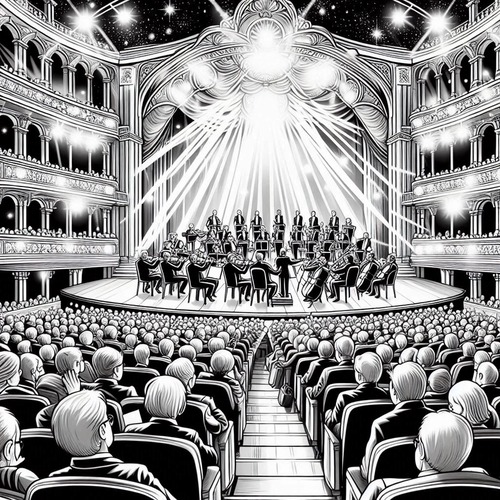A Masterstroke of Design: The Marvel of the Human Heart
Spare a thought for the most tireless worker we shall perhaps ever know: the human heart. This remarkable organ begins its rhythm before we take our first breath, nestled safely in the womb, and continues its relentless beat through every moment of our lives—through childhood adventures, stressful workdays, peaceful nights of sleep, and quiet moments of reflection. It pulses approximately 100,000 times each day, pumping around 2,000 gallons of blood through a network of vessels that, if stretched end to end, would span about 60,000 miles. And it does all this without a single coffee break, without a moment’s rest, from our days in the womb until our very last breath.
NATURE’S MOST EXTRAORDINARY PUMP: MORE THAN JUST A SIMPLE MACHINE
The human heart is far more than a mechanical pump. It’s a masterpiece of biological engineering that defies simple explanation. Imagine the most advanced machines we’ve ever created—then multiply their complexity by a factor of thousands. The heart doesn’t just move blood; it orchestrates an incredibly sophisticated dance of chemical signals, electrical impulses, and precisely regulated pressure systems.
Consider the marvel of blood flow control. Every single beat involves a complex interplay of neural and hormonal signals that regulate pressure, volume, and distribution with microscopic precision. It’s like having a supercomputer managing a global transportation network, but this computer fits in the palm of your hand and operates continuously for decades.
THE BLUEPRINT OF LIFE: INFORMATION BEYOND IMAGINATION
The human genome is more than just a set of instructions—it’s a profound mystery of coded information that challenges our understanding of biological origins. Let’s unpack the extraordinary genetic blueprint that makes the human heart possible.
- Precision of Genetic Coding: The genetic information required to develop the cardiovascular system is astonishingly precise. Each DNA sequence acts like a meticulously written instruction manual, with billions of base pairs coordinating to create the intricate structures of the heart. The specificity of this code suggests something far beyond random mutation—it speaks of intentional, intelligent design.
- Information Storage Mechanisms: DNA isn’t just a linear code; it’s a complex, three-dimensional storage system that goes beyond simple genetic instructions. The ability to store, retrieve, and express cardiovascular development information demonstrates a level of complexity that far exceeds human-made information storage technologies. This sophisticated system implies a depth of planning that cannot be explained by chance alone.
- Complexity of Cardiac Genetic Expression: The process of transforming genetic information into a functioning heart involves multiple layers of complex interactions. Genes must activate and deactivate in precise sequences, with timing so exact that even millisecond variations could result in catastrophic developmental failures. This intricate dance of genetic expression suggests a level of orchestration that points to intentional design.
A SYSTEM ENGINEERED WITH BREATHTAKING PRECISION
The cardiovascular system represents an architectural marvel that far exceeds simple biological mechanics. Every element seems carefully planned, with layers of complexity that defy simplistic explanations.
Holistic System Integration: The heart doesn’t exist in isolation—it’s perfectly integrated with every other body system. Blood vessels, neural networks, and cellular mechanisms work together with such seamless coordination that it resembles a masterfully designed technological system. This level of systemic integration suggests purposeful architectural planning rather than gradual, random evolution.
Adaptive Vessel Networks: Blood vessels are far more than simple tubes—they’re dynamic, responsive networks that can instantaneously adjust their diameter, wall thickness, and blood flow. Capillaries work with mathematical precision, delivering oxygen and nutrients to billions of cells with an efficiency that would make the most advanced human engineering look primitive. This adaptive capability speaks to an underlying intelligence in design.
Precision of Chemical and Electrical Signaling: The cardiovascular system operates through an incredibly complex network of chemical and electrical signals. Hormones, neurotransmitters, and electrical impulses communicate with millisecond precision, coordinating everything from heart rate to blood pressure. The intricate balance and communication within this system suggest a level of planning that cannot be attributed to random processes.
MORE THAN JUST SURVIVAL: A DESIGN BEYOND NECESSITY
Sometimes, biological systems reveal a generosity of design that transcends mere survival—the cardiovascular system is a prime example of this extraordinary phenomenon.
- Redundant Design Mechanisms: The heart comes equipped with multiple fail-safe systems that go well beyond basic survival needs. Redundant electrical pathways, backup circulatory routes, and self-healing capabilities demonstrate a level of design that anticipates potential failures. These aren’t just survival features—they represent a kind of biological over-engineering that suggests intentional, thoughtful creation.
- Adaptive Capabilities Beyond Immediate Need: Cardiovascular systems show remarkable adaptive capabilities that extend far beyond immediate reproductive success. The ability to maintain robust function well into post-reproductive years indicates a design principle that values sustained functionality over mere genetic propagation. This suggests a deeper purpose and planning in biological systems.
- Unnecessary Elegance of Design: Many features of the cardiovascular system appear almost unnecessarily sophisticated—elegant solutions that aren’t strictly required for basic survival. These seemingly superfluous design elements hint at a creator who values complexity, beauty, and perfect functionality beyond mere biological imperatives.
A LIFETIME OF SERVICE: BEYOND REPRODUCTIVE YEARS
Fascinatingly, the heart doesn’t just function during our reproductive years—it continues its service long after. This extended functionality suggests a design that transcends immediate biological imperatives. Why would a system evolve to be so robust, so maintained, if its only purpose was to ensure genetic propagation?
THE IMPOSSIBLE SIMPLIFICATION: WHEN COMPLEXITY DEMANDS EXPLANATION
Here’s a critical challenge to random evolutionary thinking: Many components of the heart simply cannot function if simplified. The intricate valves, the precise electrical conduction system, the specialised cardiac muscle cells—remove or significantly alter any of these, and the entire system fails. This isn’t just complexity; this is what scientists call “irreducible complexity”—a system so interdependent that it cannot have evolved through gradual changes.
CONCLUSION: A CALL TO WONDER
As you read this, your heart continues its silent, powerful work. Each beat is a testament to a design so sophisticated, so elegantly precise, that it challenges us to look beyond mere mechanistic explanations.
Could all of this—this symphony of biological engineering—really be the result of random chance? Or does it whisper of something more? A design so intricate, so thoughtful it suggests an intelligence beyond our current understanding?
THE HUMAN HEART: RELATED FAQs
How many times does the heart beat in an average lifetime? The human heart beats approximately 3 billion times during an average lifetime. This staggering number represents an incredible feat of biological engineering that defies the concept of random development, showcasing a design of remarkable durability and precision that far exceeds any human-made mechanical system.
- Why do some animals have different heart structures? The variation in heart structures across different species reveals a profound architectural intelligence rather than random evolution. Each heart design is perfectly adapted to its specific environmental and physiological needs, demonstrating a level of intentional planning that suggests a master designer who carefully crafted each creature’s cardiovascular system to suit its unique requirements.
- How does the heart repair itself? The heart’s ability to heal and adapt is nothing short of miraculous. Unlike many other organs, cardiac tissue has limited regenerative capabilities, but it possesses intricate repair mechanisms that involve complex cellular interactions, stem cell responses, and precise molecular signaling. This sophisticated self-repair system points to an incredibly thoughtful design that anticipates potential damage and provides nuanced healing mechanisms.
What makes the human heart different from other mammalian hearts? The human heart stands out through its extraordinary complexity and efficiency. Unlike many other mammalian hearts, it demonstrates an unprecedented level of neural integration, hormonal responsiveness, and adaptive capacity. The intricate balance of electrical conduction, chemical signaling, and structural resilience suggests a level of design that transcends mere biological necessity.
- How do hearts develop in embryos? Heart development in embryos is a breathtaking process of precise cellular organisation and differentiation. From a single cluster of cells, a fully functional heart emerges through a series of perfectly timed genetic instructions, cellular migrations, and structural transformations. The mathematical precision of this developmental process—where millisecond variations could result in catastrophic failures—strongly suggests an intelligently guided mechanism.
- Can the heart actually generate electrical signals? The heart is unique in its ability to generate its own electrical signals through specialised cells called pacemaker cells. These remarkable cells can create and propagate electrical impulses independently of the nervous system, maintaining a rhythmic beat that continues throughout life. This self-sustaining electrical system represents a level of biological engineering that challenges simplistic evolutionary explanations.
How do emotions physically impact the heart? The intricate connection between emotional states and heart function reveals a profound design that integrates psychological and physiological systems. Emotions trigger complex hormonal and neural responses that directly influence heart rate, blood pressure, and overall cardiovascular function. This mind-heart connection demonstrates a level of systemic integration that suggests purposeful, holistic design beyond mere survival mechanisms.
THE HUMAN HEART: OUR RELATED POSTS
- The Ankle and Feet: A Miracle of Precision Engineering
- Our Consciousness and Rationality: Is God the Best Explanation?
- DNA Evidence for Intelligent Design: New Challenges for Evolution
- Human Immunology: Evidence of Design in Our Defence Systems
- Nature’s Ultimate Computer: The Human Brain Defies Evolution
- Our Consciousness and Rationality: Is God the Best Explanation?
Editor's Pick

The Throne-Room Vision: Who Did Isaiah See?
The scene is unforgettable: Isaiah stands in the temple, and suddenly the veil between heaven and earth tears open. He [...]

The Angel of the Lord: Can We Be Certain It Was Christ All Along?
Throughout the Old Testament, a mysterious figure appears: the Angel of the LORD. He speaks as God, bears God’s name, [...]
SUPPORT US:
Feel the Holy Spirit's gentle nudge to partner with us?
Donate Online:
Account Name: TRUTHS TO DIE FOR FOUNDATION
Account Number: 10243565459
Bank IFSC: IDFB0043391
Bank Name: IDFC FIRST BANK






